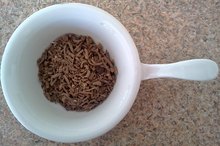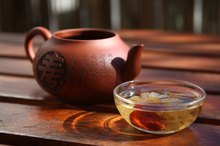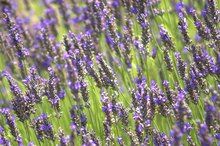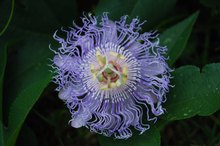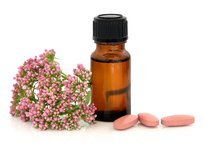What is the Life of Valerian Root and How Long Does it Stay in the Body?
Valerian is a flowering European perennial that grows up to 2 feet tall and puts out an umbrella of fragrant tiny pink, lavender or white flowers in summer 2. It has pointed dark green leaves and grayish roots that have no odor when fresh but develop a fairly unpleasant smell when they dry. It has been used as a sleep aid and anxiety remedy since at least the second century A.D. Valeriana officinalis is the herb’s Latin name.
Valerian Fresh or Dried
Valerian root is sold as tinctures and fluid extracts -- a powdered form of the root is available in both tablets and capsules 2. Tea is made by pouring boiling water over dried root and allowing the brew to steep for 5 to 10 minutes. Fresh roots are pressed for their juice to make the extracts and tinctures and the roots may also be freeze-dried in order to use them in powdered form. The plant is dried or used fresh, and some herbalists say its greatest nutritional benefit is in fresh form.
- Valerian root is sold as tinctures and fluid extracts -- a powdered form of the root is available in both tablets and capsules 2.
- Fresh roots are pressed for their juice to make the extracts and tinctures and the roots may also be freeze-dried in order to use them in powdered form.
Uses of Valerian
Is There a Difference Between Valerian Root Tea and Capsules?
Learn More
Valerian root is a traditional herbal remedy for sleep disorders, anxiety, depression, headaches, heartbeat irregularities and jitteriness or trembling 2. According to the University of Maryland Medical Center, researchers believe valerian has a milder effect than prescription drugs like Xanax and Valium 12. The herb stimulates an increase of a chemical in the brain called gamma aminobutyric that helps to relieve anxiety and regulate nerve cells. The National Center for Complementary and Alternative Medicine is studying valerian’s effects on the elderly and people with Parkinson’s disease 2. NCCAM says valerian appears to relieve insomnia but more testing is needed for other effects 2.
Valerian’s Effect is Cumulative
Valerian root may not have an immediate effect when first taken 2. It is generally not considered to be a single-dose medication. Some people find it begins to relieve symptoms after several weeks or a month of use. This indicates that the herb stays in the body for some time as its effects appear to be cumulative. No definitive studies have determined why some who take valerian notice improvement at once and others see it over time 2. But healthcare practitioners typically advocate short term usage, lasting up to six weeks, with a gradual tapering off to quit taking the herb, according to University of Maryland Medical Center 1.
Valerian Precautions
Is Valerian Root Dangerous to the Liver?
Learn More
The German government commission that regulates herbs has approved valerian as a gentle sedative 2. The Federal Department of Agriculture says it is generally regarded as safe, or GRAS. In general, valerian does not cause dependency or side effects but there are always exceptions and it is a good idea to check with your healthcare provider before taking it 2. The herb does seem to increase the effect of other sedatives, including alcohol and anesthesia. It may be unsafe to take before surgery. It has potential interactions with antihistamines and the statins used to lower blood pressure. Pregnant and nursing women should not take valerian -- it has not shown adverse effects on fetal development but conclusive results will require more testing 2.
Related Articles
References
- University of Maryland Medical Center: Valerian
- NIH: NCCAM: Valerian
- Mayo Clinic: Insomnia
- National Center for Complementary and Integrative Health. Valerian.
- Therapeutic Research Center Natural Medicine. Valerian.
- Valerian. Memorial Sloan Kettering Integrative Medicine About Herbs, Botanicals & Other Products. https://www.mskcc.org/cancer-care/integrative-medicine/herbs/valerian
- Valerian. National Center for Complementary and Integrative Health. https://nccih.nih.gov/health/valerian
Writer Bio
Benna Crawford has been a journalist and New York-based writer since 1997. Her work has appeared in USA Today, the San Francisco Chronicle, The New York Times, and in professional journals and trade publications. Crawford has a degree in theater, is a certified Prana Yoga instructor, and writes about fitness, performing and decorative arts, culture, sports, business and education .

